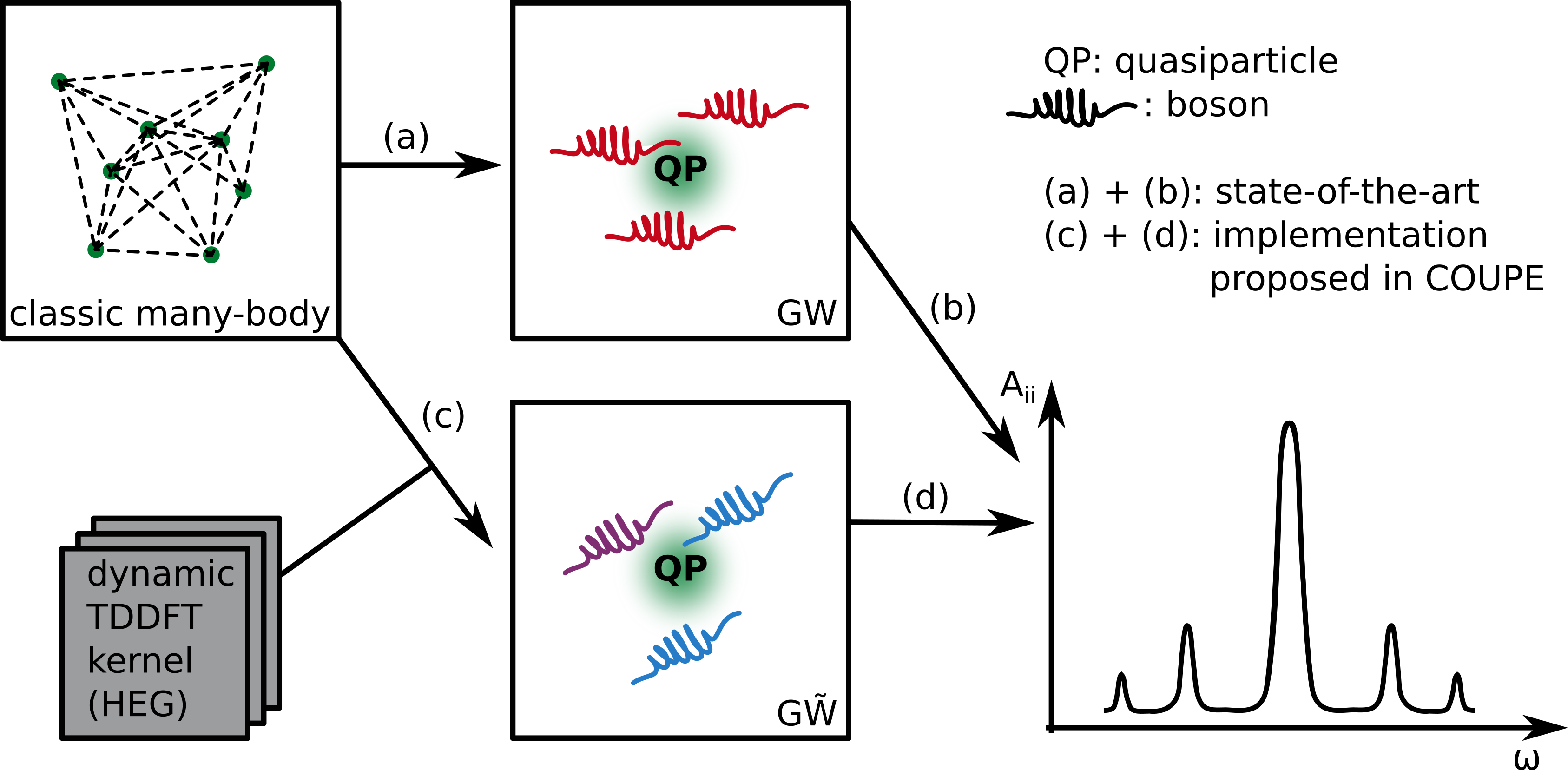Spectroscopic characterization of matter is ubiquitous in modern material science. Increased resolution and precise control over radiation sources have led to numerous discoveries of previously inaccessible spectroscopic signatures, often linked to complex excitation processes. The main challenge in their interpretation is the fact that excitations are coupled through interactions. A striking signature for this is that spectra often consist of one or more dominant peaks (called quasi-particle), followed by a series of secondary structures (called satellites). The latter, which can be very strong, are pure interaction effects and may be interpreted in terms of coupling of a quasiparticle to a bosonic excitation of the material: a plasmon, exciton, phonon, or any other boson. To solve the electron-boson problem, and, first of all, to set up the description in terms of the most pertinent quasiparticles and bosons, is a major challenge of condensed matter theory. COUPE will face this challenge. Today, quasiparticles are most often described in the GW approximation to many-body perturbation theory, whereas for bosonic excitations one can resort to time-dependent density-functional theory (TDDFT). Only a few approaches exist to describe the coupled problem, with severe limitations. For example, a cumulant expansion on top of GW describes plasmon satellites, but cannot couple to spin excitations, and there is yet no systematic way for improvement. COUPE proposes a new combination of GW and TDDFT which couples quasiparticles to all kinds of bosonic excitations. This combination relies on a recently developed “connector theory” (CT), which allows using results from the homogeneous electron gas to describe inhomogeneous materials. COUPE will further apply it to the simulation of phase transitions in magnetic and superconducting materials under study at the synchrotron SOLEIL in Paris. Preliminary model results confirm the great potential of the approach envisaged in COUPE.

